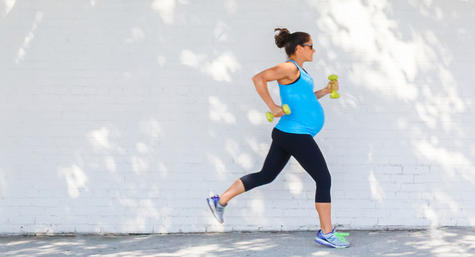When should I not exercise in pregnancy?
Most women can exercise safely in pregnancy, as long as the type and level of activity is right for them.
Some health conditions and pregnancy complications mean that you should take it easy. But you may still be able to exercise once you have discussed it with your doctor. She may just want to see you more regularly to check that all is well.
If any of the following apply to you, ask your doctor for advice before you exercise in pregnancy:
1. You have pre-eclampsia or high blood pressure that has developed since you became pregnant.
2. You are carrying more than two babies, and have been told you are likely to give birth early.
3. You have a low-lying placenta after 26 weeks of pregnancy (placenta praevia).
4. Your baby is growing more slowly (small for dates) than expected in your uterus (womb).
5. You have vaginal bleeding that keeps coming and going.
6. You have cervical weakness.

Also talk to your doctor before exercising if you:
1. Were very overweight, with a body mass index (BMI) of 40 or higher, before you were pregnant.
2. Were underweight, with a body mass index (BMI) of 12 or lower, before you were pregnant.
3. Had high blood pressure before becoming pregnant.
4. Have had vaginal bleeding early in pregnancy.
5. Have very low iron levels (iron-deficiency anaemia).
6. Have a problem with your heart or lungs, such as asthma.
7. Have joint or muscle problems.
8. Are a heavy smoker.
9. Are expecting more than one baby.
10. Have had a premature baby before.
11. Have diabetes that's not controlled.
You may still be able to do some gentle exercise, even if you suffer from these conditions. Ask your doctor if, for example, you can do routines to strengthen your arms and back, or go for walks. You can still do your pelvic floor exercises.
When should I stop exercising?
Stop exercising if you feel any pain in your stomach, or have contractions that won't go away. Gradually slow down and walk on the spot for a while, to bring your heart rate down.
Towards the end of your pregnancy, you may notice Braxton Hicks contractions while you're exercising. These should ease off if you sit down. They shouldn't be so strong that you have to breathe through them, or stop what you are doing. See your doctor straight away if you are at all worried or unsure.
Look out for pain at the front of your pelvis (pubic bone) when exercising, walking upstairs, or standing on one leg. If these activities hurt, you may have symphysis pubis dysfunction (SPD), and you should stop exercising until you have seen your doctor.
You will need to make sure that you don't put stress on your pelvis when you exercise, or when you go into labour. Tell your doctor about the pain you're feeling. She may advise you on what to do. If necessary, she may ask you to meet a physiotherapist. There are still lots of exercises you can do if you have SPD, with specialist guidance.








